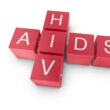HIV/AIDS and Technology
AIDS and the Power of Technology to Bridge the Gap
The use of technology is changing how we treat HIV/AIDS. People living with HIV (PLWH) are finding that mobile health apps, telemedicine, and online support platforms are effective means of increasing their access to care, support, and information.
Table of Contents

Health Apps for Mobile: Power in Your Hands
HIV/AIDS and Technology
For PLWH, mobile health (mHealth) applications provide an easy-to-use method of managing their disease. Among the main features of these apps are:
- Medication Adherence Reminders: By encouraging PLWH to adhere to their prescribed regimens, notifications and reminders can enhance the efficacy of their therapy.
- Appointment Management: By making it easier to plan and organise doctor’s visits, apps can help patients receive consistent care.
- Symptom Tracking: Users are able to record side effects and symptoms, giving medical professionals important information to keep an eye on their health.
- Educational Resources: Apps can provide dependable information on HIV prevention, treatment, and leading a healthy lifestyle.
Nonetheless, it’s crucial to take into account mHealth apps’ limitations:
- Digital Divide: Some groups may not be able to take advantage of these advantages due to limited access to cellphones and internet connectivity.
- Data privacy: Strong security measures are needed to address security issues with personal health data kept on mobile devices.
- Language Barriers: In order to reach a varied range of users, apps must be translated into multiple languages.
Telemedicine: More Intimates, Remote Care
HIV/AIDS and Technology
Telemedicine lowers obstacles to care by enabling PLWH to communicate remotely with healthcare providers. This is how it helps those living with HIV:
- Remote Consultations: During pandemics or in remote places, virtual consultations can be very helpful for facilitating communication with healthcare specialists without requiring physical travel.
- Mental Health Support: Access to mental health specialists through telemedicine can help with the emotional difficulties of living with HIV.
- Better Continuity of Care: Frequent teleconsultations facilitate more thorough monitoring and enable necessary modifications to treatment programmes.
Among the difficulties with telemedicine are:
HIV/AIDS and Technology
- Technical Infrastructure: For teleconsultations to be successful, dependable internet access and appropriate gadgets are required.
- Absence of Physical Examination: Some medical conditions need for in-person examinations, which makes a combination of virtual and in-person therapy necessary.
- Digital literacy: Patients can need help or instruction when utilising telemedicine platforms.
Internet-Based Help Desks: Discovering Community Strength
HIV/AIDS and Technology
For PLWH, the internet creates a sense of belonging and offers priceless support. Internet-based platforms provide:
- Peer-to-Peer Support: PLWH can overcome feelings of isolation by sharing experiences, offering encouragement, and connecting through online forums and support groups.
- Access to Experts: Question and answer sessions with medical specialists or HIV/AIDS specialists can address particular issues and offer trustworthy information.
- Anonymity: For those who are the target of prejudice, online platforms can offer a secure environment where they can ask for assistance without worrying about being stigmatised.
Nevertheless, there are restrictions with online support platforms:
- Misinformation: Users should be sceptical of information they come across and rely on reliable sources because the internet is full of false information.
- Cyberbullying and Stigma: Stigma can occasionally be reinforced in online groups, necessitating careful moderation and safety nets.
- Restricted Accessibility: Internet access and digital literacy may be obstacles for specific groups of people.
A Holistic Approach to HIV/AIDS Care
HIV/AIDS and Technology
Conventional HIV/AIDS care cannot be replaced by technology. But when they work together well, telemedicine, online platforms, and mHealth apps can:
- Give PLWH the tools they need to better control their care and health.
- Increase access to care by removing administrative and geographic obstacles.
- By encouraging information and creating supportive communities, stigma can be lessened.
- Simplify data gathering and transmission to improve healthcare delivery.
HIV/AIDS and Technology
By tackling the digital divide with infrastructure development and digital literacy training programmes, it is imperative to ensure fair access to technology. To safeguard sensitive information, strong data privacy and security measures are also necessary.
We can develop a more all-encompassing, approachable, and empowering approach to HIV/AIDS care by utilising technology in conjunction with conventional healthcare services. This will enhance health outcomes for PLWH worldwide.


